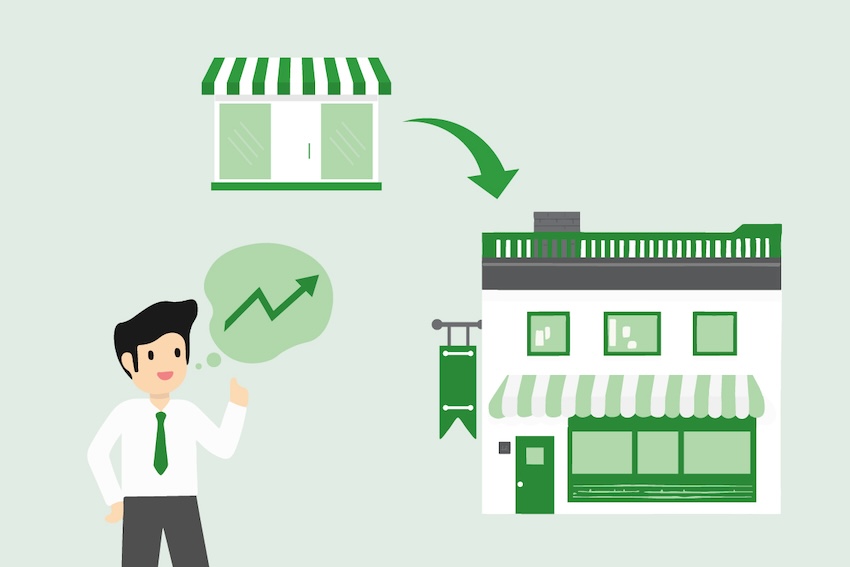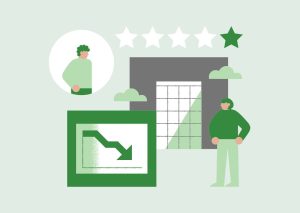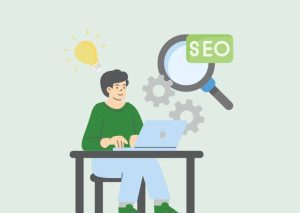
How to Transform Your Small Business into a Large Brand
In this fourth episode of The BizWisdom show, Sam talks about transforming your small business into a big brand. If you’ve been struggling with how to take those next steps toward becoming a big juggernaut of a brand, this episode is for you.
Most Common Challenges For Small Businesses
Inconsistent Lead Generation
The first and most common small business challenge I see is this: You’ve grown your business to a point where most of your customers come from referrals and word of mouth. You may have joined some networking groups, and you’ve built this business up over many years—or maybe it hasn’t been that long.
Whatever the case, you’ve got it to a stage where it’s a real business. You have office space, employees, customers, processes, systems, and a sales process. You’re winning new business, and you’re a success.
But the problem is that referrals and word of mouth don’t consistently come in every month. Some months, you get a whole bunch; the next month, nothing at all. It’s crickets.
Difficulty Planning For The Future
The problem with inconsistent lead generation is that you can’t plan because you don’t know how many leads you’ll get next month. It’s challenging to know when to hire your next employee or how much you can spend on marketing.
On the flip side, you get incredibly busy when all the leads come in at once. This scenario puts pressure on all your systems, and you end up with lumpy results.
Inability To Scale
The biggest problem with word-of-mouth marketing is that you can’t scale it. How do you scale word of mouth? How do you scale referrals? Although you can build referral systems and attend networking events, there’s only so much you can do. There’s this ceiling you can’t get through.
What often happens is that the same market forces that lead to new opportunities also lead to natural churn. While you’re winning new business, you’re also losing customers.
You can grow to a point, but there’s this natural ceiling you can’t get past. You might inch up a bit, then fall back and never reach that next step.
The Solution: A Marketing-Led Business
Marketing, sales, and advertising are the engines for driving growth. Once you develop that system, it’s suddenly scalable and much easier to plan. All those teething problems of referral-based businesses disappear.
You can still get those referrals, but again, they come and go. So, it’s better to supplement them with marketing, sales, and advertising activities that will grow your business. It will be transformative and incredible because you won’t be held back by a lack of certainty in what’s coming next. You’ll be in control, with the reins in your hand.
The Problem: Many Businesses Fail In Transitioning To Marketing
The Ease Of Referrals Vs. The Difficulty Of Marketing To Cold Audiences
Transitioning to marketing, sales, and advertising is the point many businesses never get past. Most try, but the hard truth is most fail. That’s because word of mouth and referrals are easy. You’re pitching to people who already know you or know someone who’s put in a good word for you.
These people are coming into your business with a whole lot of trust. Sometimes, they might not even talk to anybody or look at other alternatives. You don’t have to get as much right for them to become a customer as you do for a cold audience who’s never heard of you before.
Even if they shop around a little bit, they don’t know or trust those other companies. Instead, they trust you. If the price is right, and what you offer ticks a couple of their boxes, you’re good to go.
In contrast, marketing to a cold audience coming into the business is a fair fight, and that’s hard. To win a fair fight, you must be tough and strong and have a competitive product.
In other words, to make marketing the engine of your business–to take cold audiences who have never heard of you–and turn them into paying customers is way more complicated than turning referrals and word-of-mouth prospects into customers.
The Root Shock Of Dealing With Cold Audiences
Most people fail right at the start because they experience that root shock if they’ve never dealt with cold audiences before. The shock of that different type of customer who’s suddenly trying to grind you down on price, isn’t as responsive, doesn’t instantly connect with you, and doesn’t have that rapport you’re so good at developing.
All of a sudden, you have to implement many components that you may never need to get right before. These components include:
- trust signals
- social signals
- communicating your key selling points or the value proposition
Your referrals were a lot easier. You only had to get 30% of it right to close a deal. But now, you must get close to 100% because if you don’t, the competitor will, and you have no competitive advantage over them when you’re starting. You don’t have that trust that was built from the referral.
Common Mistakes In Making The Transition
Giving Up Too Soon
Many businesses will try a tactic to transition from a referral/word-of-mouth business to a marketing-led business. They’ll post on social media and do an outstanding job for 20 or 30 days. But when they don’t get any leads or customers, they’ll say, “Ah, it doesn’t work. Maybe it’s just easier to wait for those referrals.”
Sometimes, heaps of referrals come in, and then they get so busy that they forget about marketing. Since it didn’t really work anyway, they quit.
Marketing takes a lot of work. You may have to put five or ten times more effort into winning a prospect and turning them into a customer early on than you ever had to with referrals.
The harder reality is that the customers are probably not going to be as valuable. They won’t be the same caliber of customers that you were winning from referrals. The people you’ll be talking to in those early days are probably lower-paying.
That will be demoralising, and there’s an opportunity for you to walk away. But you need to push through it. The only way to unlock the dreams of being a marketing-led organisation that’s scalable and consistent that you can plan for is to get through these teething stages where things are hard and the value of the customers isn’t as good.
Focusing On The Wrong Marketing Channels
The next mistake I see business owners make is trying the wrong marketing activity. Organic social media posts, for example, will not win you leads right away, though they can accomplish many things. So, I don’t recommend generating leads on social media as the first advertising or marketing piece you put out there.
Instead, I recommend a channel that will deliver instant leads so you can build momentum in the early days. For me, that is always going to be paid advertising. It’s rarely going to be organic social media, SEO, a big-budget brand campaign, or TV advertising. Those are all powerful activities, and they should be part of your marketing program at some point, but not when you’re first starting out.
Lack Of Clear Objectives
The third mistake is that your objectives are not aligned with your tactics or you have no objectives at all. You need a system. At first, that system is going to be incomplete. You can’t look at the big companies doing this for decades and just copy their whole program. Most businesses will need more resources to do that, and it will be too much too soon. It’s not going to work.
But it makes sense to sketch out a system and then understand the objectives. At this stage, your primary objectives should be leads and sales. Your secondary objective is to win trust. These people don’t know you. Which tactics are going to build the most trust? Which platforms will allow you to reach the right users at the right time?
Another problem with goal setting is not understanding what the goal will entail. I’ve encountered many businesses that want to increase leads and brand awareness simultaneously.
Although these goals are achievable, they require entirely different programs. There are only so many programs that can give you instant leads, sales, and brand awareness.
Brand awareness is a long-term investment that pays off over time by establishing trust and recognition, eventually leading to more leads and sales. However, in the early stages of transitioning to a marketing-led model, it’s better to focus on generating immediate leads and sales. This short-term sales activation strategy can provide the revenue needed to fuel those longer-term brand-building efforts.
Not Being Realistic About The Goals
Businesses often say, “We need more leads, and some brand awareness would be great too.” But when I ask about specific goals, they frequently say, “We want to double our leads!” This ambitious mindset is common but not realistic. Doubling leads usually requires a significant investment, which may not be feasible for everyone.
Instead, start with smaller, achievable objectives. For example, aim for a specific number of monthly leads, like 10 or 20. This approach will allow you to focus your resources and track progress more effectively. It’s a stepping stone towards those larger goals. Remember: sustainable growth comes from setting realistic targets and gradually building upon your successes.
Keep At It
It’s frustrating to see how many businesses give up on overcoming these challenges. Transitioning from referral-based growth to a marketing-driven model is undeniably tough, and many hit that wall early on. But that doesn’t mean you should resign to limited growth or retreat to the comfort of referrals.
You’re not alone in this struggle. Virtually every small business faces this hurdle at some point. It’s the defining challenge that separates those who remain small from those who achieve significant brand growth.
So, take heart in knowing that others have been where you are. The key is to keep at it, recognising that the path will be challenging and the initial rewards may be modest. But with the right systems, clear objectives, and a persistent, step-by-step approach to implementing effective marketing strategies, you can achieve the tremendous growth potential that lies ahead.
I’m here to help you navigate this process. I’ve dedicated my career to guiding small businesses through this very transformation. If you’re ready to take that next step, reach out. Let’s discuss your specific challenges and start mapping a strategy to kickstart your growth engine.
Follow The BizWisdom Show for More Business Insights
Enjoying The BizWisdom Show so far? Catch the streams as they go live by following us on YouTube or following Sam on LinkedIn. You can also subscribe below:
If you want to catch more of Sam, check out the Brandwith® Podcast with co-host Dean Millson, available on:
Looking to launch your business with inspired digital advertising? Contact Sam today to find out all the ways that BizWisdom can help with lead generation, increased sales, improved brand awareness, and more!


